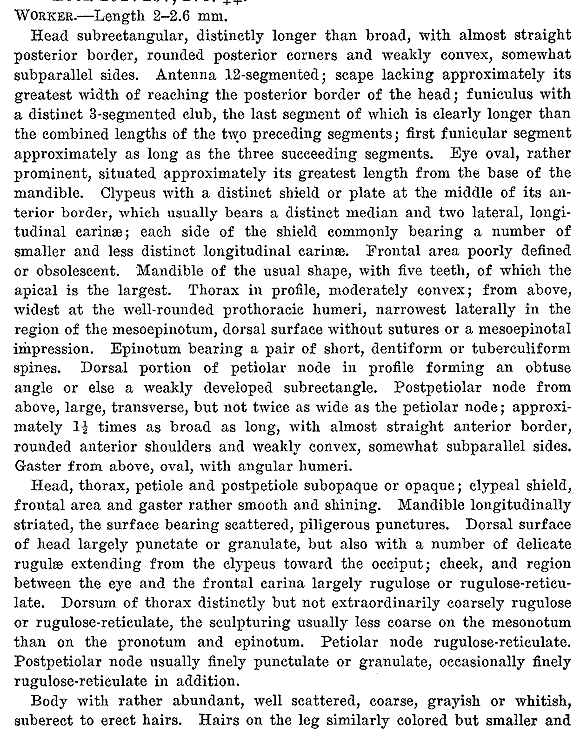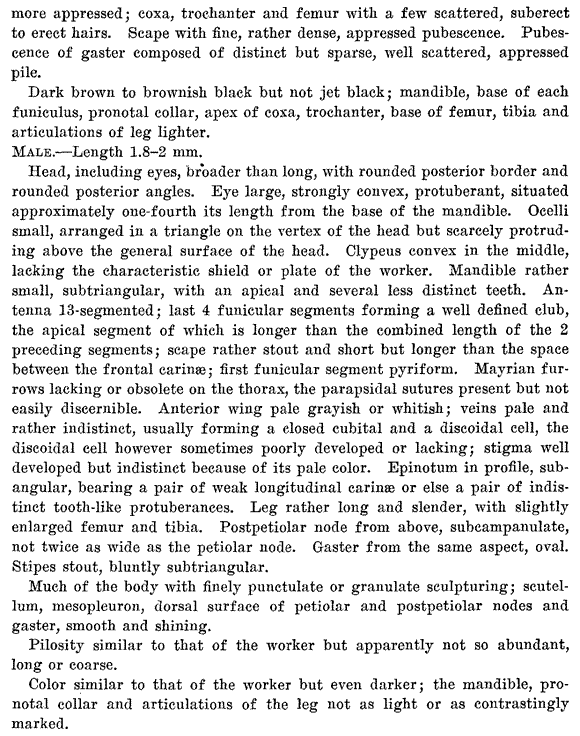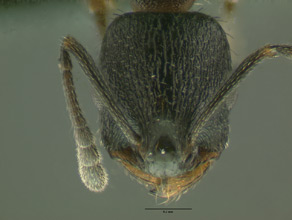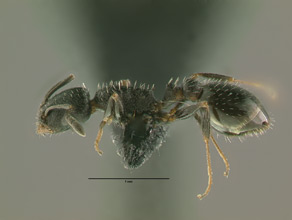- Identification
- Ants of the genus Temnothorax are small, with a head that is elongate relative to their mesosoma, and have an 11 or 12 segmented antenna that ends in a 3 segmented club. The mesosoma has no, or only minor, depressions along its dorsal surface and the propodeum either bears two small tooth-like projections or two true spines.
- Temnothorax tricarinatus are small workers with a 12 segmented antenna and well developed propodeal spines. Their clypeus bears a medial and two lateral carinae.
- Biology
- Modified from Mackay (2000): Nests under rocks and in moist soil in open grassy areas. This species has been found in foothill meadows, canyon deciduous forests, oak woodlands, oak-history forests, ponderosa pine forests, shortgrass prairies, sagebrush and pastures, cedar forests, areas with scant vegetation and disturbed sites. Colonies are monogynous.
- Distribution
- Range
- United States. North Dakota, South Dakota, Idaho, Wyoming, Utah, Nevada, Arizona, Colorado, New Mexico, Nebraska and Iowa.
- Navajo Reservation Records
- Collection records being processed.
- Etymology
- Morphological. The clypeus has a well developed medial and two lateral carinae. L. tri = three + L. carinatus = keeled.




- Literature
- Emery, C. 1895. Beiträge zur Kenntniss der nordamerikanischen Ameisenfauna. (Schluss). Zoologische Jahrbücher, Abteilung für Systematik, Geographie und Biologie der Tiere. 8:257-360.
- MacKay, W. P. 2000. A review of the New World ants of the subgenus Myrafant, (Genus Leptothorax) (Hymenoptera: Formicidae). Sociobiology. 36:265-444.
- Smith, M. R. 1952. North American Leptothorax of the tricarinatus-texanus complex (Hymenoptera: Formicidae). Journal of the New York Entomological Society. 60:96-106.
- A note about these publications. The literature cited here is not meant to be an exhaustive list of papers published about this species.
Page authored by David Lubertazzi and Gary Alpert


